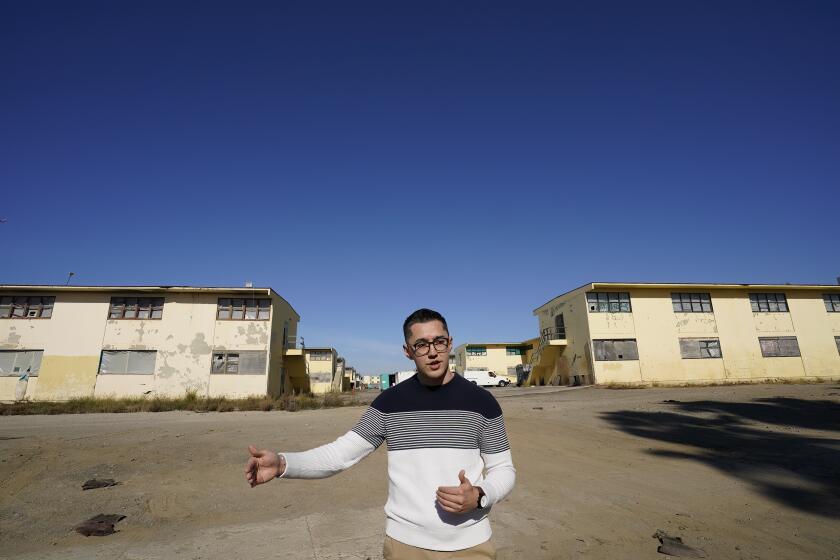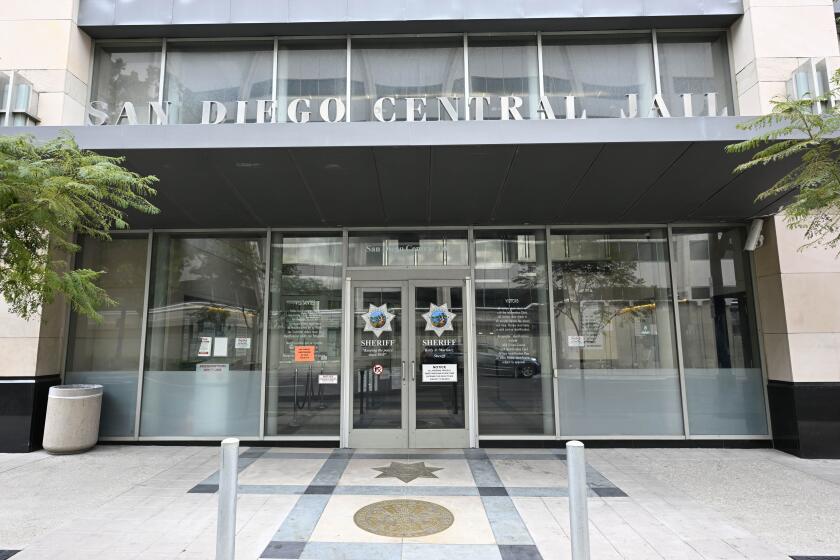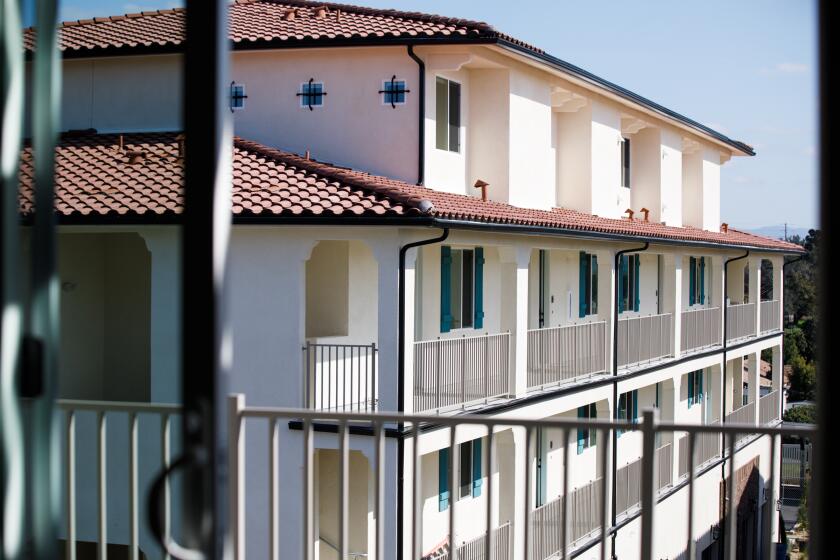Column: SDPD recruitment video highlights ‘militarization’ of police
Police use of military equipment, tactics and reliance on veterans have been debated for years
“Militarization of police” has been a catchphrase for evolving police tactics long before the recent “defund the police” movement.
Yet the two concepts have converged amid the protests over racial injustice following the deaths of George Floyd and other Blacks during encounters with police.
The increasing use of military equipment and imagery among law enforcement agencies has been disputed for years, raising both questions about its effectiveness and the message it sends to the public.
In San Diego and elsewhere, police oversight panels and critics have even suggested that law enforcement agencies’ hiring practices are too focused on military veterans — a notion sharply rejected last year by some SDPD leaders and local veterans.
Regardless, police recruitment videos, to varying degrees, often include SWAT teams and other tactical units in action. Among the large police agencies in the region, no one does this more so than the San Diego Police Department.
At the top of the department’s recruitment webpage is a video titled “This is SDPD.” It’s all of 15 seconds and is made up of more than a dozen rapid-fire scenes centered around SWAT team action — armed, helmeted officers jumping out of a tactical vehicle and bursting into a room — mostly shot in grainy, gray tones.
In other takes, police boats speed on the water with a helicopter overhead and officers drive all-terrain vehicles on a beach with urgency. There are flashing lights on vehicles whizzing by and what looks like a surveillance video from above of a crowd in the streets.
The soundtrack is pounding, heavy metal music over a crackling police radio. No one speaks, and officers have no interaction with members of the community.
The video ends with the department’s recruitment campaign theme “SDPD. One Team. One Mission.” The department had other, broader options but chose the hard focus on intense, tactical action amid a years-long struggle to reverse a shortage of budgeted officers.
Three other videos are on the webpage, but to find them you have to scroll to the bottom past a lot of other information about benefits and the application process.
They present a different message. While including some tactical action, they highlight snippets from an ethnically- and gender-diverse handful of SDPD officers mentioning such things as “I feel like we help people” and “the goal of police work is to treat people with kindness.” One also shows officers patrolling Comi-Con.
Those down-page videos are more in line with the key recruitment videos from other local agencies.
The Sheriff’s Department’s featured video (“Become a Deputy”) lasts 50 seconds and follows a deputy as she drives in her patrol car and talks with citizens and motorists.
“Twenty-four hours a day, seven days a week, deputies patrol your communities to keep you safe,” she says. “We respond to emergencies, enforce the law and develop partnerships with the communities we serve.”
There are other promotional spots that rotate on the page, including a more intense 30-second video that starts off with the words “Honor, Loyalty, Respect, Fairness, Truth, Diversity, Integrity,” and moves on to images of people being handcuffed along with a SWAT operation.
The Chula Vista Police Department takes a distinctly different approach from SDPD. While there are flashing lights and some brief SWAT moments in the 90-second video, the piece includes a presumed officer with his arms around children at home, officers talking with groups of children and adults, and an officer rushing out of his car at an accident scene to assist a woman and a baby.
The words “Honor,” “Challenging,” “Duty,” “Teamwork,” “Innovation,” “Community,” and “Family” are superimposed on corresponding scenes.
Even further afield is the Oceanside Police Department. The start of its six-plus-minute video could be mistaken for a tourism pitch, with beautiful beach scenes and a diverse group of officers talking about what a great place Oceanside is. Then they speak glowingly about the department, fellow officers and their relationship with the community.
The spot includes police action — yes, there are SWAT teams — but that’s a relatively minor element.
“We really work with our community and it’s a team effort,” says one officer. “It’s not just the police department versus the community.”
Inspirational music opens the video and comes in again later, rising to a crescendo as the video ends with another shot of the sun-splashed Oceanside Pier.
SDPD’s recruitment-video focus comes years after the department drifted away from its groundbreaking community-oriented policing that emphasized embedding officers in neighborhoods where they work with residents on strategies to keep communities safe.
Law enforcement agencies are multi-faceted, and SWAT teams are deployed in a comparatively small number of instances. But when they are used, the tactical units attract a lot of attention because they are usually inserted into crisis situations.
Few doubt whether they’re necessary, though the growth of heavily-armed tactical units and how they are used has drawn concern.
A 2018 study of 9,000 U.S. law enforcement agencies concluded that police militarization does not reduce crime or change the number of officers killed or assaulted, according to National Public Radio.
Further, the study by the Proceedings of the National Academy of Sciences said greater reliance on tactical teams reduced public support for police and funding of their operations — because the teams and equipment gave the impression departments were well funded.
That plays directly into the increasing call for “defunding police.” The term can range in meaning from getting rid of departments all together to the more common desire to redirect some police funds to social services that can help address the root causes of crime.
SDPD has made some headway regarding its officer staffing and retention issues after the city approved large pay increases for police. It’s not clear how much value hyping SWAT teams has been there.
Nor is it clear whether highlighting tactical units has done anything to help the department’s overall image.
Get Essential San Diego, weekday mornings
Get top headlines from the Union-Tribune in your inbox weekday mornings, including top news, local, sports, business, entertainment and opinion.
You may occasionally receive promotional content from the San Diego Union-Tribune.











